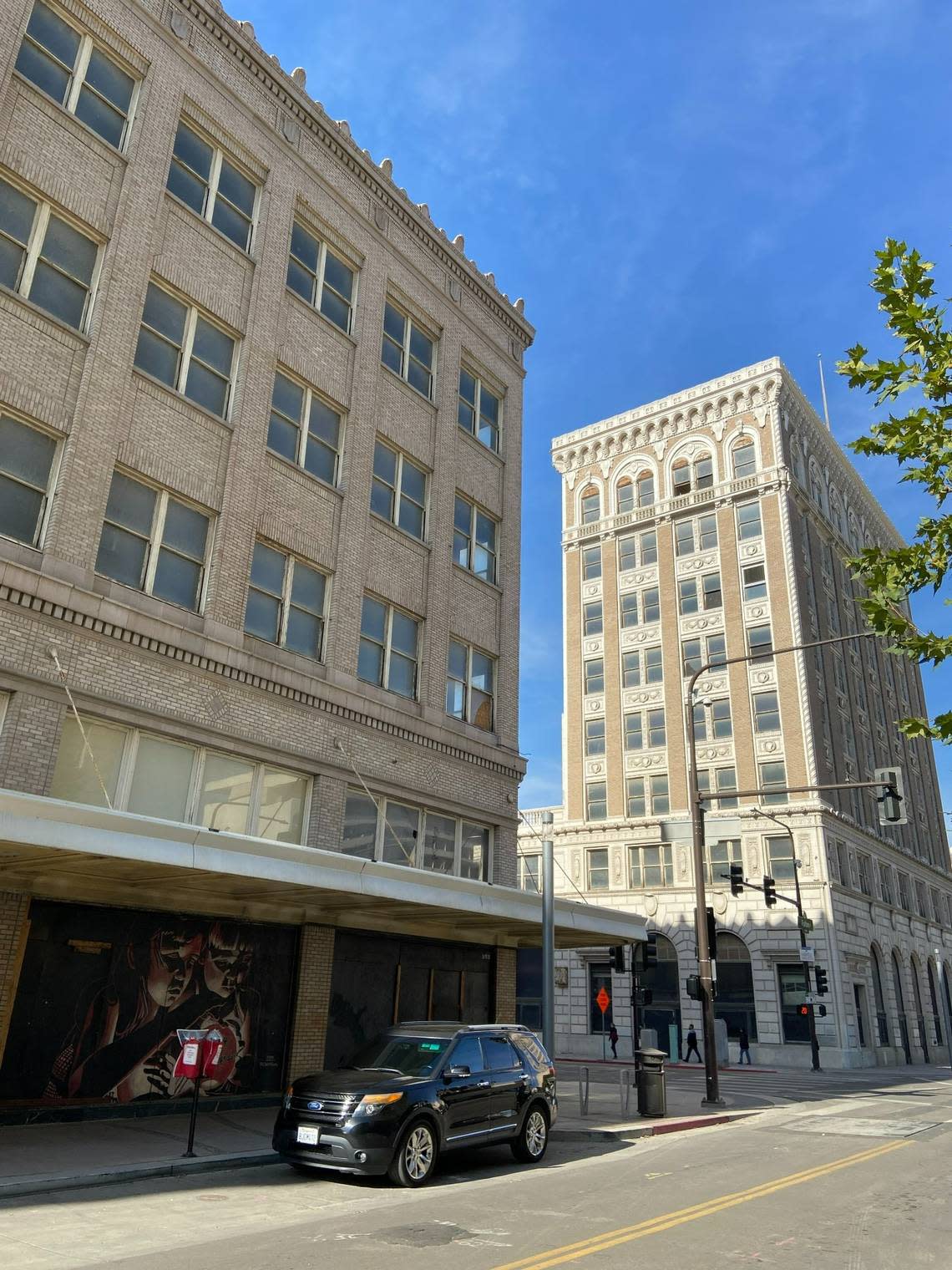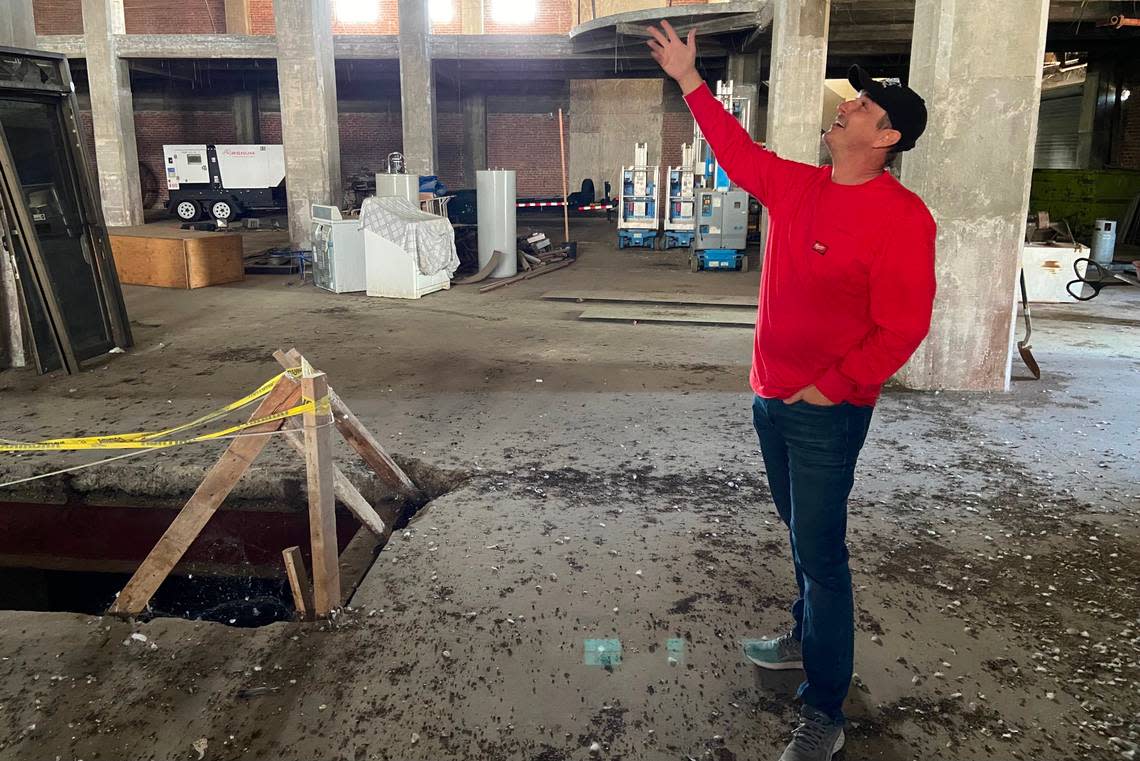‘We’re the first mover.’ Fresno developer has big plans for historic downtown building | Opinion
Fresno’s oldest department store has been where developer dreams go to die.
Will Dyck sounds confident his dream for what’s known as the JC Penney building won’t be the next casualty.
“Every out-of-town developer has big press conferences with posters of the finished property, and they never do a damn thing,” Dyck said after giving a recent tour. “We laugh about it all the time.”
Since being abandoned decades ago, the hulking six-story building at the corner of Fulton and Tulare streets that backs up to Chukchansi Park has twice been owned by Los Angeles-based developers with grand visions of transforming it into mixed-use apartments.
These visions had names (Ballpark Lofts and The Diamante). The latter had a website and went as far as submitting construction plans to the city before things went dark.
Opinion
Best known for his downtown renovations of the former Bitwise buildings, Dyck entered the picture in early 2020 when he purchased the century-old edifice out of foreclosure.
The president and CEO of Summa Development Group said the bank note cost “$3 million” and he then spent “nearly three-quarters of a million” clearing past liens to the city and county for overdue property and utility taxes.
Dyck’s vision for the building that opened in 1924 as the Radin-Kamp Department Store and then occupied by JC Penney from 1941-86 also has a name: The Penney.
“We’re going with an Art Deco or maybe a Roaring ’20s theme,” the Fresno native said.
Construction plans currently under city review feature 160 residences on the building’s upper five floors; those with windows facing southeast will have stadium views. Also included are 80,000 square feet of ground-floor retail space along Fulton and Tulare and a 55-stall parking garage in the basement. (A city-owned garage with 300 stalls is almost directly across the street.)
“It’s what the market wants,” Dyck said about the trend toward one bedrooms and studios at the expense of two bedrooms.
“The market wants dense, smaller units. That’s how they live. People have less stuff and try to spend less time in their apartment and want to be walking and hanging out and enjoying downtown.”

Key downtown housing addition
As has been well established, Mayor Jerry Dyer wants 10,000 people living in downtown Fresno – roughly three times the current number.
Few projects, if any, are more instrumental in reaching that goal than The Penney. And for more than just the extra 160 units of housing stock in a part of downtown where none currently exists.
Fulton Street still has many empty storefronts, but the only vacant high rises are the JC Penney building, the eight-story Bank of Italy building across the street and the 10-story Helm Building a block away. (Whose owners have also submitted construction plans.)
If any of these so-called zombie buildings could be brought back to life, perhaps timid investors would be catalyzed to stop sitting on their properties and participate in the revitalization of downtown.
And if any developer is capable of pulling off such a feat, it’s Dyck.
Why? Mainly because he has a track record of getting things done downtown, transforming historic warehouses and restaurants into modern office buildings.
“The city has had a long history of going down paths with out-of-town developers who just don’t understand Fresno and getting over their skis as far as not understanding the scope of how complicated and expensive these projects are,” Dyck said.
Despite sitting vacant for so long, the JC Penney building is in “excellent condition” structurally and won’t require much seismic retrofitting compared to other structures its age, according to Dyck.

‘We’re the first mover’
A previous owner demolished the interior. Little remains besides 30 steel-reinforced cement internal pillars that extend from the basement to the sixth floor. Also removed was a central elevator, leaving a void that will become a sunlight-exposed “external internal space” for tenants who don’t have units with windows facing the street.
“It’ll be a pretty unique space,” Dyck said while pointing from the ground floor. “Once we get our demo done you’ll be able to look here and see all the way up to the sky.”
Dyck has not yet determined whether all 160 units will be market rate or if a portion will be affordable. That will depend, he said, on whether federal housing subsidies are required to keep the project moving forward.
Although Dyck believes the $293 million state investment in downtown is “critically important” to replace aging infrastructure, he indicated there is enough “existing capacity” to support The Penney.
“We’re the first mover,” he said. “If you go a block to the north and a block to the south, this is the only residential project happening. That’s the advantage of being first in.”
Dyer, in a recent interview with The Bee, said he met with Dyck in mid-October and “wouldn’t be surprised” if the developer is granted a certificate of occupancy “by the end of 2024.”
Dyck called the project a “two-year build” once the construction permits are approved and financing is secured.
What’s a reasonable timeline for the first residents to move in?
“2026,” Dyck replied before seeing my surprised expression.
“You want to be safer? 2027.”
Where previous out-of-town developers have failed, this local sounds confident of success.
No preemptive press conference necessary.
